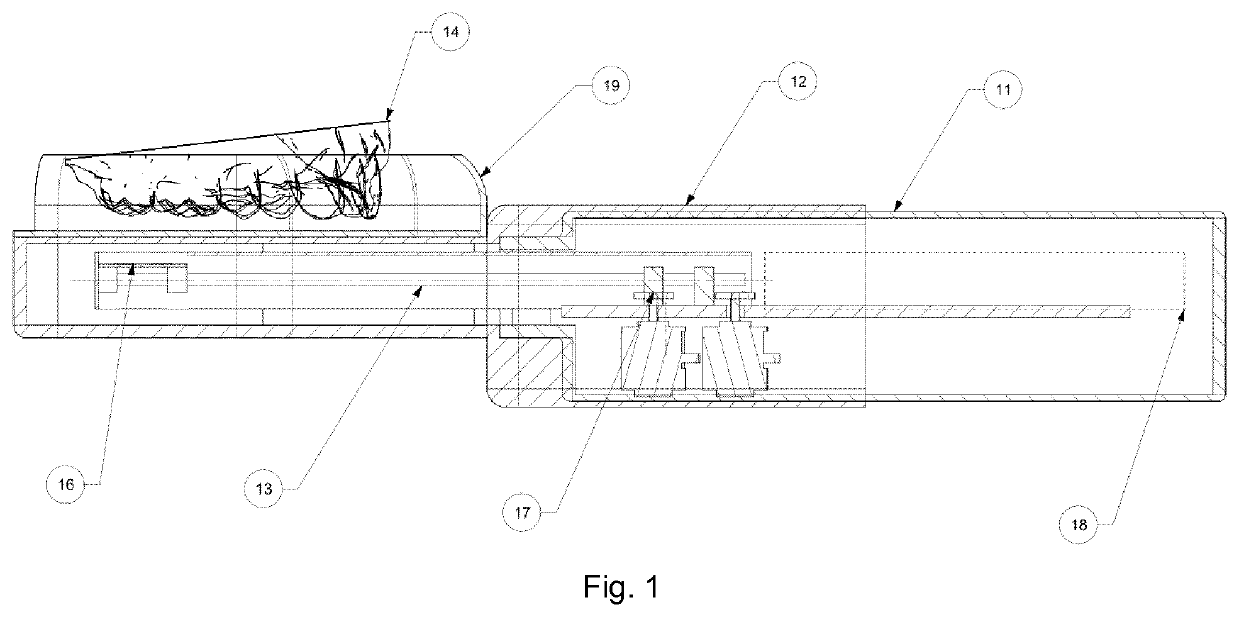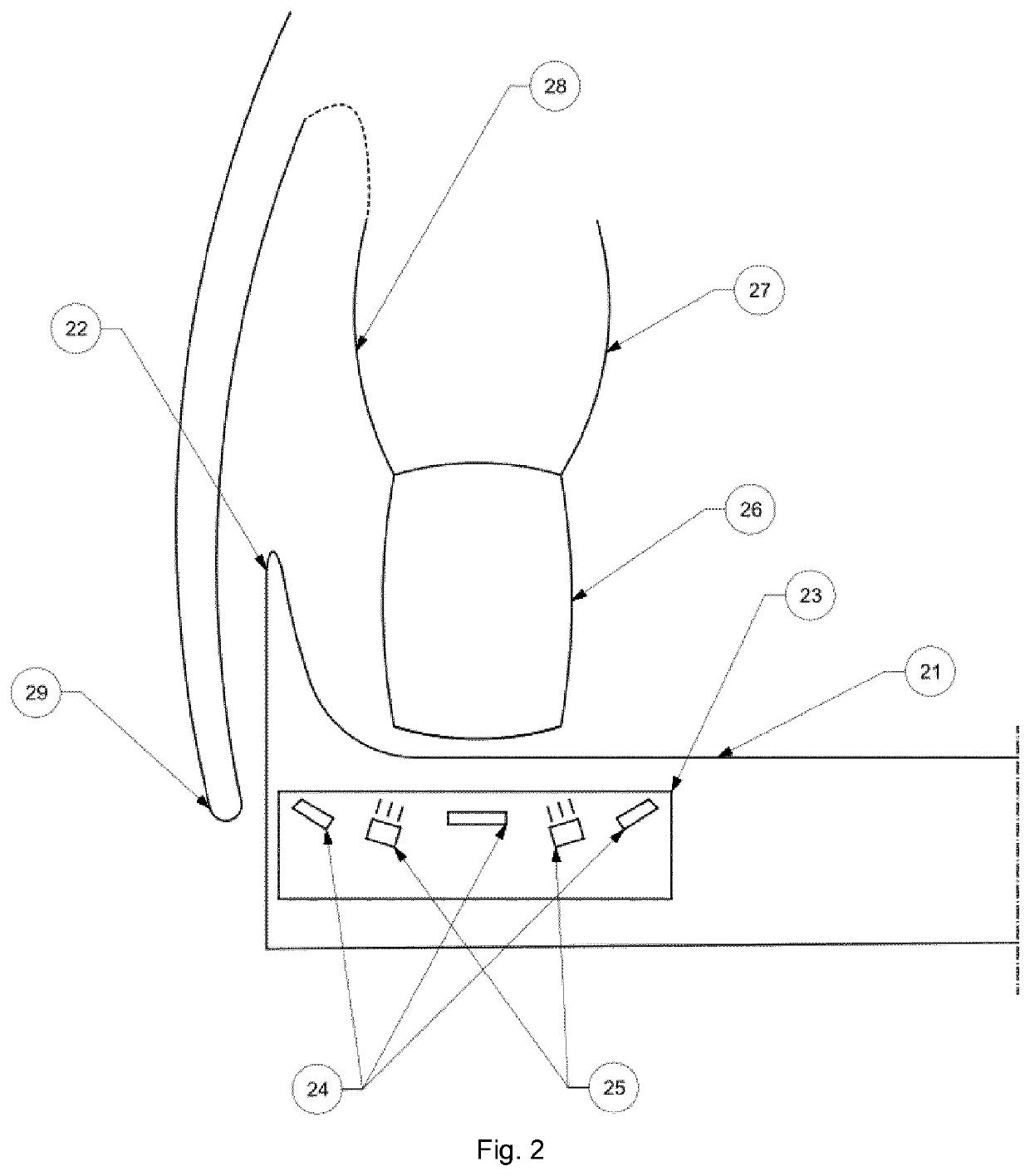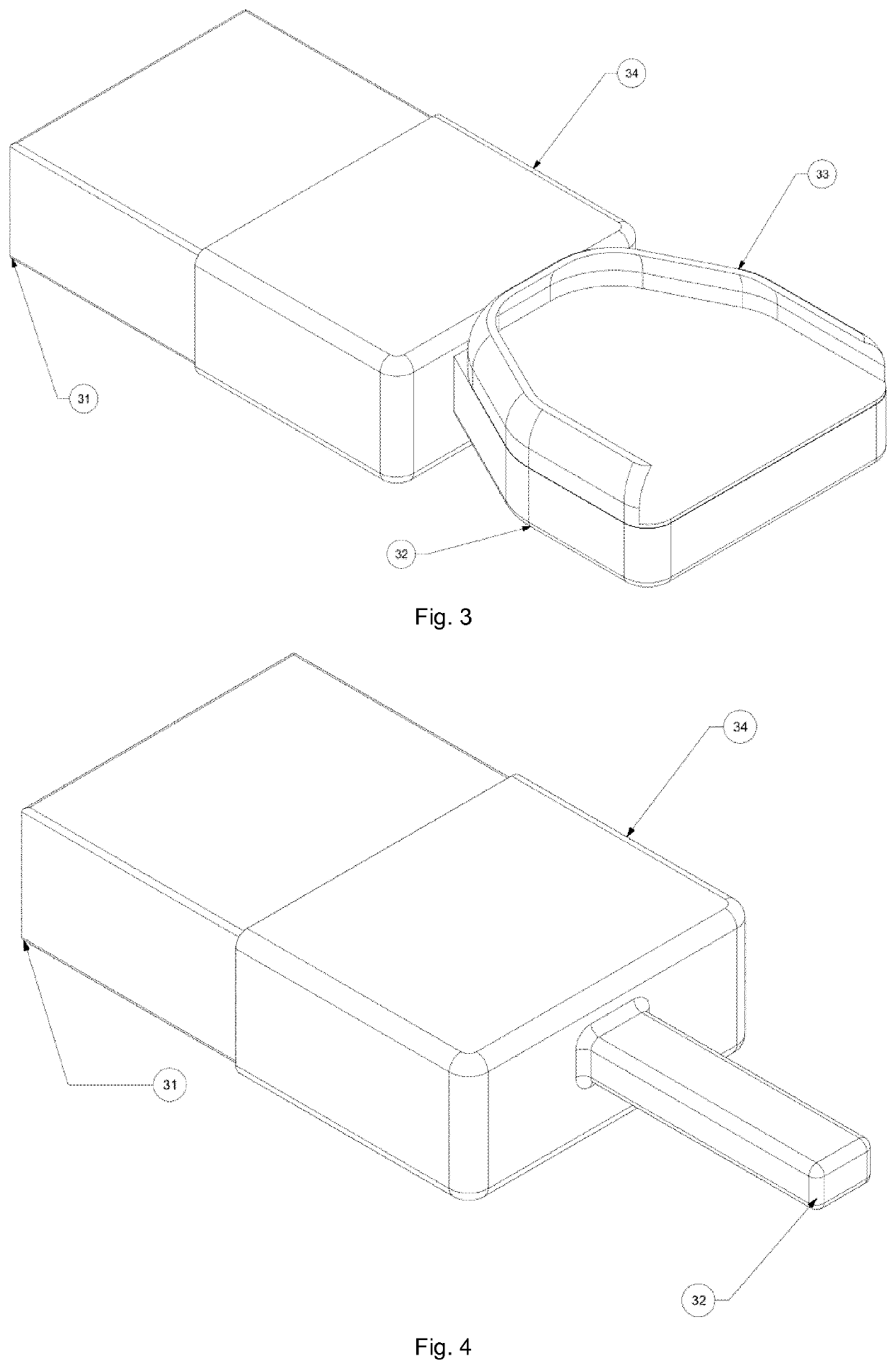Intra-oral scanning device, method of operating such a device and scanner system
a scanning device and scanner technology, applied in the field of intraoral scanning devices, can solve the problems of low reproducibility, low precision, and model space occupation, and achieve the effect of improving image quality or model quality and fast image collection and scanning process
- Summary
- Abstract
- Description
- Claims
- Application Information
AI Technical Summary
Benefits of technology
Problems solved by technology
Method used
Image
Examples
first embodiment
[0064]FIG. 1 shows an intra oral scanning device according to the invention. It comprises a main part 11 and a mouthpiece 12 with a cover section to protect the main part 11. It further comprises a scanning arm 13, which in operation or while scanning protrudes from the main part 11 and extends out of the main part 11 into a hollow interior of the mouthpiece 12. As indicated with the dotted line the scanning arm can also be positioned inside the main part 11 in a parking position 18. There it is protected in the main part 11 and the mouthpiece 12 can be removed or replaced or the like.
[0065]At one longitudinal end, the scanning arm 13 has a head portion 16 that is equipped with plural scanning sensors as signal collectors and light sources. The mouthpiece 12 is positioned in the mouth of a patient such that an upper jaw 14 resides on a top surface of the mouthpiece 12. The mouthpiece 12 has a buccal wing portion 19 that is positioned between the cheek and the teeth of the upper jaw ...
second embodiment
[0067]In FIG. 2 an intra-oral scanning device according to the invention is shown in operation. The device is similarly embodied as the first intra-oral scanning device described above. FIG. 2 shows a portion of a mouthpiece 21 arranged in an oral cavity of a patient below an upper jaw. The upper jaw comprises gingiva 27 and teeth 26, wherein the teeth 26 are adjacent to a transparent upper surface of the mouthpiece 21. The mouthpiece 21 has a wing portion 22 positioned between a vestibular side 28 of the gingiva 27 and a cheek 29 of the patient. By means of the wing portion 22, a distance or free space between the cheek 29 and a vestibular side of the upper jaw can be provided which allows for efficiently scanning the outer or vestibular side of the upper jaw as well.
[0068]A head portion 23 of a scanning arm of the second intra-oral scanning device is positioned inside a hollow interior of the mouthpiece and adjacent to the teeth 26 of the upper jaw. It is equipped with three scann...
third embodiment
[0069]FIG. 3 shows an intra-oral scanning device. The device comprises a main part 31 and a mouthpiece 32, which has a wing portion 33. The main part 31 has a first mount structure and the mouthpiece 32 has a second mount structure 34. The first and second mount structures 34 are arranged to connect and release the mouthpiece 32 to and from the main part 31. In particular, the second mount structure 34 has a sleeve portion imposed over a section of the main part 31. Thereby, the sleeve portion on one hand holds the mouthpiece 32 on the main part 31 and on the other hand protects the main part 31 and particularly a transition between main part 31 and mouthpiece 32 where a scanning arm extends from the main part 31 into an interior of the mouthpiece 32.
[0070]In FIG. 4 and FIG. 5 a fourth embodiment and a fifth embodiment of intra-oral scanning devices are shown. The devices are identical to the intra-oral scanning device of FIG. 3, wherein the mouthpieces 32 are shaped differently. Th...
PUM
 Login to View More
Login to View More Abstract
Description
Claims
Application Information
 Login to View More
Login to View More - R&D Engineer
- R&D Manager
- IP Professional
- Industry Leading Data Capabilities
- Powerful AI technology
- Patent DNA Extraction
Browse by: Latest US Patents, China's latest patents, Technical Efficacy Thesaurus, Application Domain, Technology Topic, Popular Technical Reports.
© 2024 PatSnap. All rights reserved.Legal|Privacy policy|Modern Slavery Act Transparency Statement|Sitemap|About US| Contact US: help@patsnap.com










